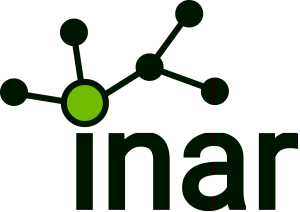EFNS/ENS Joint Congress of European Neurology: 31 May – 3 June 2014, Istanbul
Uncontrolled use of painkillers by sufferers of headache and migraine can set off a downward spiral, as overuse itself leads to headaches. New research into this recurrent topic in neurology has been presented at the Joint Congress of European Neurology in Istanbul, showing that medication overuse is a key risk factor for migraine and tension headache, but can be successfully treated in more than three quarters of cases by a structured detoxification programme. Self-medication for chronic headache is shown to be inadvisable.
Istanbul, 1 June 2014 – Headache and migraine are among the most common neurological complaints, and in the industrialised world especially their prevalence is rising. According to the World Health Organisation (WHO), the lifetime prevalence of episodic headache is 70 per cent, while that of episodic migraine is 15 per cent. Headache is also one of the ten disorders that cause the most functional disability worldwide. Recent studies, presented at the Joint Congress of European Neurology in Istanbul, contribute new insights into headache caused by medication overuse, which can be treated successfully by structured detoxification programmes, with lasting results in three out of four cases. One study also demonstrated the advantages of professional medical treatment of headache over self-medication.
Self-medication for headache not advisable
A study conducted at the University of Pavia showed that medical care and treatment for headache is preferable to self-medication. In patients who had previously been self-medicating, the duration of headaches could be more than halved within the first three months of professional treatment, and the intensity of headaches and monthly dose of analgesics was also reduced. “The results show that the changeover from self-medication to specialized medical care may reduce the frequency of symptomatic treatment and the number of headache attacks per month, and improve the quality of life in patients with headache,” study author Prof Fabio Antonaci told the Congress. 274 patients taking symptomatic headache medication were recruited in pharmacies for the research and treated professionally instead of self-medicating.
Successful therapy for medication overuse headache
The success of a structured detoxification programme to treat medication overuse headache (MOH) was demonstrated by a recent study by the Katip Celebi University, Izmir, Turkey. 12 years after treatment, 77 percent of study participants remained free of MOH and in 20 per cent of patients there was a reduction in headache frequency of more than 50 per cent. Only three per cent of patients reverted to episodic headache. “This long-term follow-up study revealed a marked decline in the frequency of MOH. Patients who were previously regarded as treatment-resistant benefited considerably from multidisciplinary treatment and close follow-up,” commented study author Dr Yesim Beckmann.
77 patients altogether, 67 women and 10 men with an average age of 40.7 years, took part in a structured detoxification programme to treat headaches related to medication overuse. Migraine was diagnosed in 75.3 per cent of the participants, and tension headache in 20.7 percent. Four per cent were suffering from a combination of migraine and tension headache. The majority (54 per cent) were taking non-steroidal anti-inflammatory drugs (NSAIDs), 17 per cent were taking ergot derivatives and 18.5 per cent were taking a combination of the two. The average duration of medication use was 5.4 years.
Migraine linked to medication overuse and stress
Research at Valladolid University Hospital in Spain evaluated clinical and demographic characteristics of patients with chronic migraine for a prospective headache registry. Data was analysed from 150 patients who attended at an outpatient headache clinic between January 2013 and January 2014. Study author Dr Marina Ruiz Pinero explained: “Overuse of medication and stressful life events are among the frequent risk factors for chronic migraine. We were able to conclude that previous administration of preventatives and triptans was insufficient.”
Medication overuse was diagnosed in 70 per cent of cases and stressful life events were reported by 42 per cent of patients, while mood disorders were a factor in 12 per cent and obesity in 6 per cent. Comorbidities included cardiovascular disease risk factors in almost half of the cases (48.7 per cent) – in particular smoking – as well as other chronic pain in 12.7 percent and respiratory disease in 4.7 per cent. Only a quarter of patients had previously received triptans as symptomatic treatment, and in 47.3 per cent of cases at least one preventive drug had been used.
Sources:
Congress Abstracts Antonaci et al., Monitoring the use of symptomatic drugs in headache: a population study; Beckmann et al., Medication overuse headache: a-12 year follow-up study of 77 patients; Ruiz Piñero et al, Chronic migraine: characteristics in a prospective headache registry
Press Office of the Joint Congress of European Neurology
B&K – Bettschart&Kofler
Dr Birgit Kofler
Mobile: +43-676-63 68 930
E-Mail: kofler@bkkommunikation.com
Skype: bkk_Birgit.Kofler
